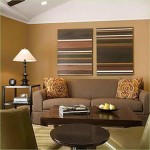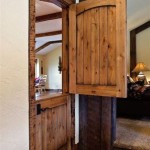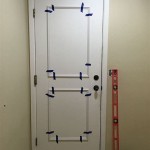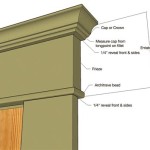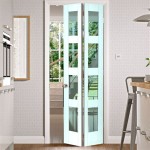How Much Does It Cost to Paint the Interior of a House?
Painting the interior of a house is a common home improvement project that can significantly enhance its aesthetic appeal and potentially increase its value. However, understanding the costs involved is crucial for effective budgeting and planning. The total expense can vary considerably depending on several factors, including the size of the area to be painted, the quality of materials used, and whether the project is undertaken by a professional painting service or completed as a DIY endeavor.
This article provides a comprehensive overview of the various elements that contribute to the overall cost of interior house painting, enabling homeowners to make informed decisions and accurately estimate the expenses associated with their project.
Factors Influencing Interior Painting Costs
Several factors can influence the cost of painting the interior of a house. These factors can be broadly categorized into the scope of the project, the materials chosen, and the labor involved. A clear understanding of each element is essential for developing an accurate cost estimate.
Size of the Area: The most significant factor affecting the overall cost is the square footage of the area to be painted. This includes the total wall surface area in a room or the entire house. Larger rooms and homes will naturally require more paint, primer, and labor, thus increasing the expense. The height of the ceilings also contributes to the overall surface area and material requirements.
Condition of the Walls: The condition of the walls plays a crucial role in determining the amount of preparation work required. Walls with cracks, holes, or damaged surfaces necessitate patching, sanding, and priming before any paint can be applied. Extensive preparation work adds to the labor costs and material expenses.
Type of Paint: The type of paint selected significantly impacts the overall cost. Different types of paint, such as latex, oil-based, and specialty paints, vary in price and application requirements. Higher-quality paints often offer better coverage, durability, and finish, but they also come with a higher price tag. The type of finish chosen (matte, eggshell, satin, semi-gloss, or gloss) also affects the cost, as some finishes require more coats for optimal results.
Color Selection: While it might seem insignificant, the color selection can influence the painting costs. Deep or vibrant colors often require multiple coats of paint to achieve full coverage and uniform color. This is especially true when painting over a lighter color or a previously painted surface. Using a tinted primer can help reduce the number of coats needed and lower the overall cost.
Labor Costs: If hiring professional painters, labor costs will constitute a significant portion of the overall expense. Labor rates vary depending on the location, the experience of the painters, and the complexity of the project. Reputable painting services typically charge by the hour or by the square foot. The estimated labor cost should include not only the actual painting but also the preparation work, such as cleaning, patching, and masking.
Accessibility: The ease of accessibility to the painting area also impacts the cost. Rooms with high ceilings, intricate moldings, or difficult-to-reach areas may require additional labor and specialized equipment, such as scaffolding or ladders. Obstacles like furniture, fixtures, and appliances necessitate careful masking and protection, further adding to the labor time.
Breaking Down the Cost Components
To accurately estimate the cost of interior house painting, it is helpful to break down the expenses into their individual components. This approach allows for a more detailed assessment of the project's requirements and helps identify areas where costs can potentially be reduced.
Paint Costs: Paint is a primary expense in any painting project. The cost of paint varies based on the brand, type, quality, and finish. A gallon of high-quality interior paint can range from $30 to $70 or more, depending on the specific characteristics. To determine the amount of paint needed, calculate the total surface area to be painted and consult the paint manufacturer's coverage specifications. Typically, a gallon of paint covers approximately 350 to 400 square feet.
Primer Costs: Primer is essential for preparing the walls and ensuring proper paint adhesion. It also helps seal porous surfaces, cover stains, and create a uniform base for the paint. The cost of primer is generally lower than that of paint, ranging from $20 to $40 per gallon. A single coat of primer is usually sufficient, but in some cases, such as when painting over dark colors or porous surfaces, two coats may be necessary.
Supplies Costs: In addition to paint and primer, various supplies are required for a successful painting project. These include paintbrushes, rollers, paint trays, painter's tape, drop cloths, sandpaper, putty knives, spackle, and cleaning supplies. The cost of these supplies can range from $50 to $200 or more, depending on the quality and quantity needed. Investing in high-quality brushes and rollers can improve the finish and reduce the amount of paint required.
Labor Costs (Professional Painters): If hiring professional painters, labor costs will generally be the most significant expense. Labor rates vary depending on the location, experience, and skill of the painters. Some painters charge by the hour, while others charge by the square foot. Hourly rates can range from $25 to $75 per hour, while square footage rates can range from $1 to $4 per square foot. Be sure to obtain multiple quotes from different painting services and carefully review the scope of work included in each quote.
DIY Labor Costs: If undertaking the painting project as a DIY endeavor, the labor cost will be your own time and effort. While this can save a significant amount of money, it is important to consider the time commitment and skill required to achieve a professional-looking finish. It is also important to factor in the cost of tools that you may need to purchase if you don't already own them. A DIY project may require more time and result in a lower-quality finish compared to hiring professional painters.
Estimating the Total Cost
Estimating the total cost of interior house painting involves considering all the aforementioned factors and adding up the individual expenses. Here's a general guide to estimating the cost:
Measure the Area: Accurately measure the total surface area to be painted. This includes the walls, ceilings, and any trim or moldings. Multiply the length of each wall by its height to determine the surface area, and then add up the areas of all the walls in the room or house.
Calculate Paint and Primer Needs: Determine the amount of paint and primer needed based on the surface area and the manufacturer's coverage specifications. It is generally recommended to purchase slightly more paint than needed to account for touch-ups or additional coats.
Estimate Supplies Costs: Factor in the cost of all necessary supplies, including paintbrushes, rollers, painter's tape, drop cloths, and cleaning supplies. Consider purchasing a painting kit that includes most of the essential tools.
Obtain Labor Quotes: If hiring professional painters, obtain multiple quotes from different painting services. Be sure to provide accurate information about the scope of the project and the condition of the walls. Compare the quotes carefully and consider factors such as experience, reputation, and warranty.
Add Up All Costs: Add up the cost of paint, primer, supplies, and labor (either professional or DIY). This will provide an estimate of the total cost of the interior house painting project.
Contingency Fund: It is always advisable to add a contingency fund of 10% to 15% to the total cost estimate to cover unexpected expenses or unforeseen issues that may arise during the project. This ensures that you are financially prepared for any potential surprises.
By meticulously considering all these elements, property owners can construct a precise budget for their internal painting endeavor, guaranteeing that the initiative stays affordable and generates the desired aesthetic transformation.
Furthermore, it is important to consider long-term value. Although a higher initial investment in quality materials or professional labor may seem prohibitive, the increased durability and superior finish can save money in the long run by reducing the need for frequent repainting.

Fixr Com Cost To Paint A House Whole Painting

How Much Does It Cost To Paint The Interior Of A House In Paintrite Pros

How Much Does It Cost To Paint The Interior Of A House In Paintrite Pros

Cost Of Painting A House Interior Comprehensive Guide

How Much Does Interior Painting Cost Castle Complements

Average Interior Painting Cost A 2024 Guide To House Painter

Average Cost To Paint A House Coloradopainting Com

Interior House Painting Cost 2024 Forbes Home

Cost To Paint Interior Of Your House 2024 Data Angi

Fixr Com Cost To Paint A House Whole Painting
Related Posts

